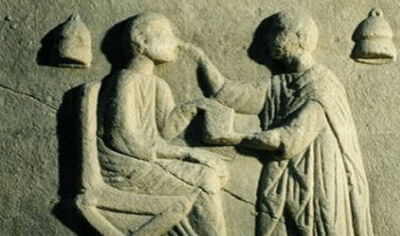Cosmetic Surgery in Roman Times

Plastic surgery was said to first be preformed in ancient Roman times. The word "plastic surgery" is actually derived from the Greek word plastikos, which means to mold or shape. They preformed minor procedures such as otoplasty, which is the repairing of damaged ears, and more complicated procedures like scar removal.
The Romans performed plastic surgery for reconstructive purposes on wounded soldiers, as well as for cosmetic purposes for freed slaves and rich upperclass men. Cataract operations became almost routine in ancient Rome.
Branding or scar removal was a pricey yet sought after procedure that many freed slaves paid for to reduce the stigma of having been a slave. Some ancient Roman women received otoplasty because their ear lobes had stretched from wearing heavy earrings.
There are three big names that came out of Rome during the practice of cosmetic surgery. The Greek physician Galen, a Roman physician Aulus Cornelius Celsus, and a Greek surgeon Paul of Aegina. These three laid the grounds for big developments in plastic surgery. Galen wrote best selling books on human anatomy and Celsus wrote a book entitled "De re medicina" which mentions the reconstructive surgery of a man's face and a primitive nose job. Celsus's book was so great it was used for more then 1,700 years.
From the Byzantine and Arabian empires, medicine was developed to help foster surgery. Although there was no anesthesia yet, surgeons used opium poppy capsules (morphine), henbane seeds (scopolamine) and alcohol for minor pain relief.
The Romans knew little about germs and how they related to disease, although they could observe a connection, which is why techniques to kill germs before and during surgery were employed like boiling their surgical tools and washing wounds with acetum (a mild acetic acid solution which was a slightly alcoholic byproduct of winemaking).
The medical tools used in ancient Rome were a primitive version of what you would see a cosmetic surgeon use today. They included forceps, scalpels, catheters and bone drills.
The scalpels were made of steel or bronze and were used to make a variety of incisions. Bone drills and bone hooks were used to remove diseased or unwanted tissue, and were helpful when maneuvering small pieces or raising blood vessels during plastic surgery.
Bone levers were also used during early facial reconstructive surgery, and were also said to have been used for levering out teeth.
Did you know...
Galen studied the bodies of animals to support his research and make comparisons to human anatomy.



